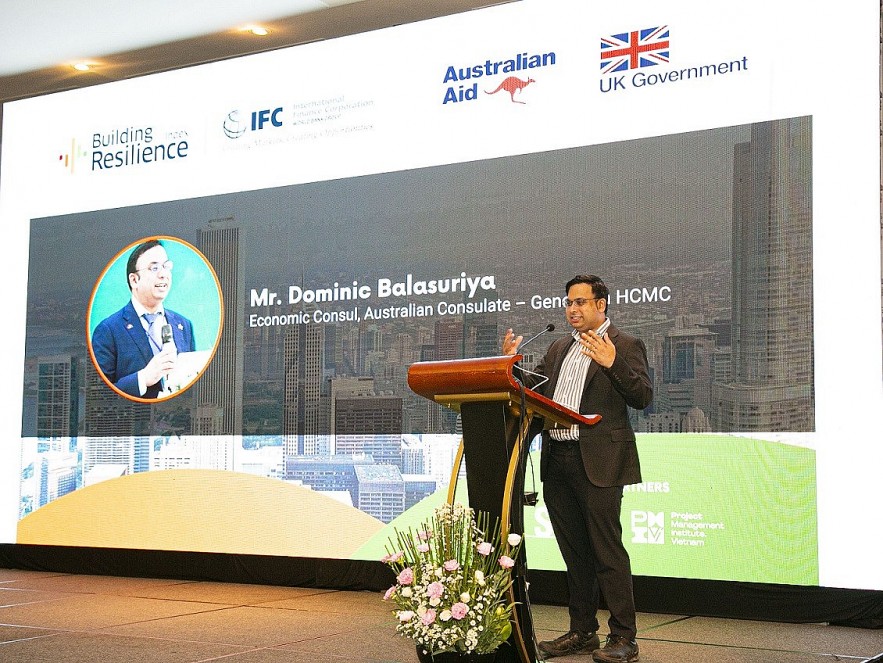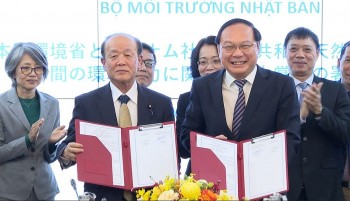Experts Discuss Ways to Build Climate Resilience for Vietnam’s Built Environment
The event gathered more than 150 building practitioners, architects, and climate experts for industry-related discussions, along with an update on the pilot phase of IFC’s Building Resilience Index (BRI) in Vietnam.
Vietnam is highly exposed to natural disasters. In Ho Chi Minh City alone, 154 communes and wards out of 322 have a history of regular flooding.
Dominic Balasuriya, economic consul of the Australian Consulate General in Ho Chi Minh City, emphasized the need to improve green construction for Southeast Asia to transition to net zero by 2050. He stated that the Australian government recently announced a $222 million investment in the Mekong-Australia partnership that will have a strong focus on water, energy, and climate.
 |
| Dominic Balasuriya, economic consul of the Australian Consulate General in Ho Chi Minh City, spoke at the event. |
Anna Hurlimann, associate professor at the University of Melbourne, Australia, underscored the importance of integrating both climate change adaptation and mitigation actions across built environments. "We noticed a lack of discussion about the need to integrate both adaptation and mitigation actions," she said.
Dr. Elizabeth Yarina, assistant professor at Northeastern University, USA, advocates for more inclusive approaches to resilience planning that account for competing views of risk and appropriate responses to climate change.
Alexandria Norris-Moore, climate change and resilience advisory lead for Royal HaskoningDHV APAC Region, discussed the major physical and transitional climate risks facing Vietnam's built environment, including rising temperatures, increased flooding, sea level rise, and regulatory changes, emphasizing the need for adaptation, mitigation, and resilience measures to be applied to construction and design to build climate resilience.
"A lot of the resources that we use are imported or exported. You need to start considering the physical and transitional risks: supply chain disruptions, physical damage, increased insurance, lack of insurance, regulatory changes or uncertainties, and changing demands for product and reputational damage," she advised.
Nguyen Mai, IFC’s climate finance expert, said businesses can enhance their capacity and reputation by utilizing IFC's BRI index, thereby attracting climate-related capital flows. “To access green capital, there’s been an increasing need for specific actions, along with certificates and recognition indicators. This tool expedites project evaluation processes, facilitating the swift disbursal of climate-related capital."
 | COP28: Vietnam Joins The Global Cooling Pledge Over 60 countries have signed the Global Cooling Pledge, announced today by the UAE as host of COP28 and the Cool Coalition. The pledge targets ... |
 | Vietnam, Japan Strengthen Cooperation in Climate Change Adaptation Vietnam is always interested in building solutions for natural disaster early warning systems, an official said, encouraging Japanese businesses to participate in the hydrometeorological service ... |
 | Strengthening Sustainable and Resilient Livelihoods for Women Coffee Producers in Son La SURE project will be implemented for 36 months in 4 communes in Thuan Chau and Mai Son districts of Son La province, focusing on supporting ... |
